3-Way Low Profile CPU Cooling Shoot-Out: Reeven, Phanteks, & Noctua
by E. Fylladitakis on January 18, 2017 8:00 AM EST- Posted in
- Cases/Cooling/PSUs
- Noctua
- Phanteks
- Cooler
- Reeven
The Noctua NH-C14S
The sheer size of the box hints that the Noctua NH-C14S is not a very compact construct. Much like nearly all of Noctua’s products, the artwork on the box is austere, limited to providing useful information about the cooler itself. Inside the box everything is individually packed into separate cardboard boxes. Alongside with the mounting hardware, Noctua is also offering a basic screwdriver for the installation of the cooler, a fan speed reducer, a metallic case badge and a syringe with NT-H1 thermal compound.
Unlike the other two coolers in this review, the Noctua NH-C14S has not been designed to be very compact, but to fill the gap between low-profile coolers and standard tower coolers for users that purchased relatively tall/wide HTPC cases. Although its core design is similar to that of other horizontal coolers, the fin array is wider and much thicker, offering more than three times as much surface area as very low profile coolers. Two small holes can be seen halfway through the array, meant for the provided screwdriver to go through from and reach the screws at the base of the cooler. The first fin of the array is not physically different than the rest, but it does have the company logo punched onto it.
The NH-C14S has a single 140 mm NF-A14 PWM fan installed. The major twist with the design of the NH-C14S is the position of the fan, which is underneath the fin array and is pushing the air upwards through it. Still, standard RAM modules will fit underneath the NH-C14S. The user has the option to place the fan (or another fan) at the top of the fin array, increasing the clearance of the RAM modules by 25 mm but adding the same height to the overall height of the cooler. With the fan at the top of the array, RAM modules up to 70 mm tall can fit, allowing greater hardware compatibility if the case can support a cooler that is 142 mm tall.
Noctua’s Secufirm2 mounting system design has the cooler ready for installation, with the mounting braces and screws already waiting on the base of the cooler. Six nickel plated heatpipes are sandwiched between the copper base of the cooler and its bulky aluminum top. The machining of the base is flawless, without even the slightest imperfection to be found upon close inspection. It seems that the contact surface has been worked from the center out. Although it has not a mirror finish, it is extremely smooth and difficult to soil.


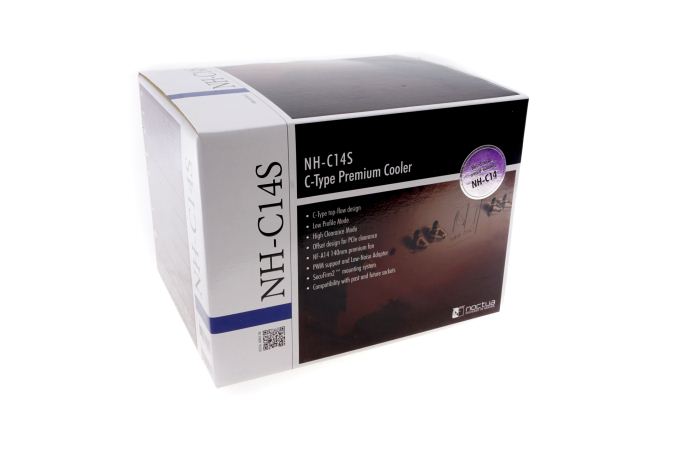
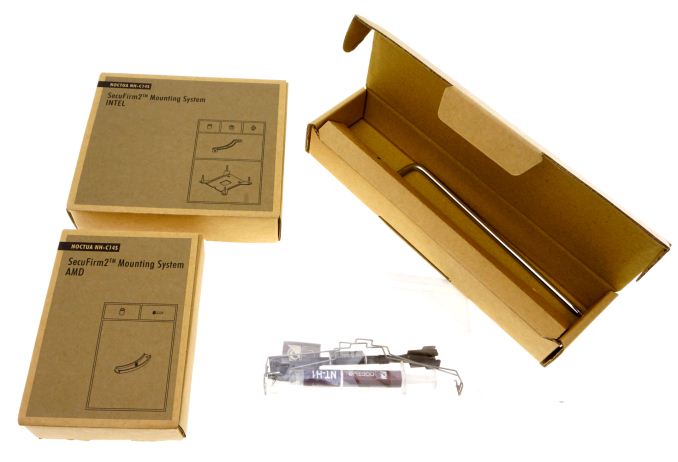
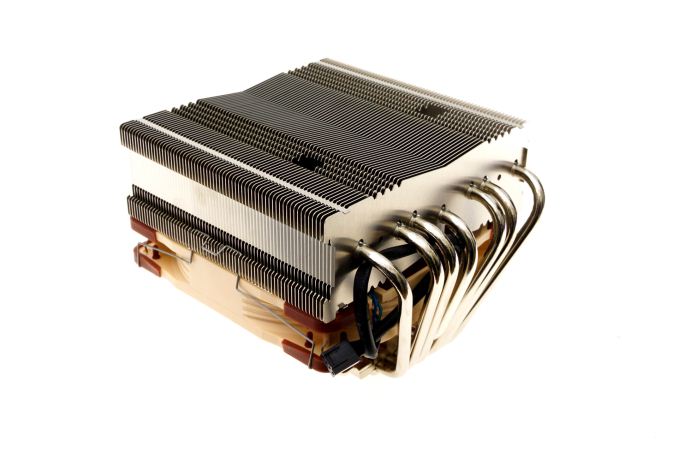
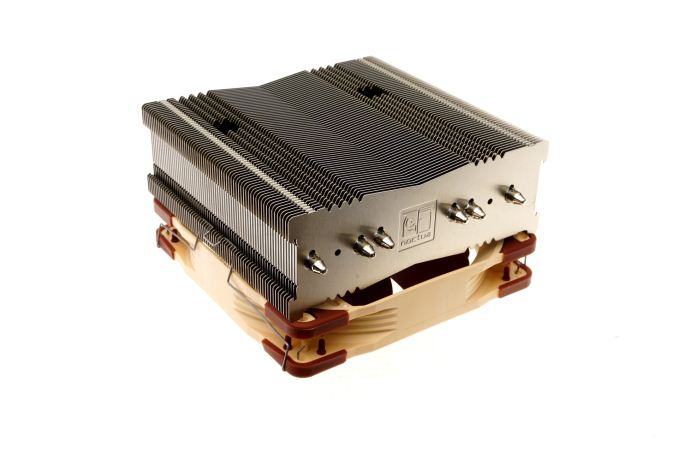
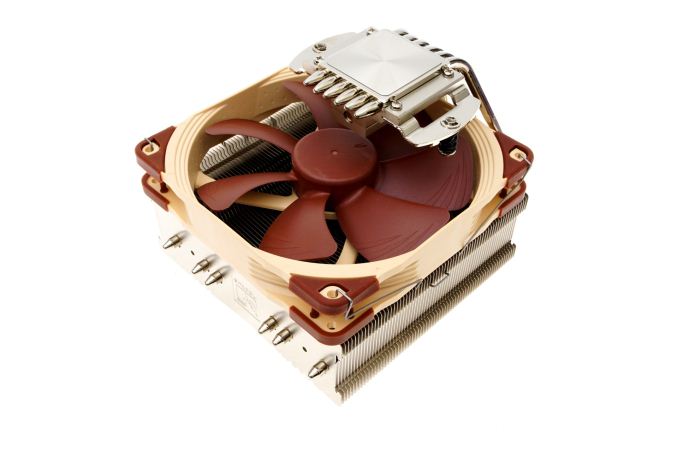
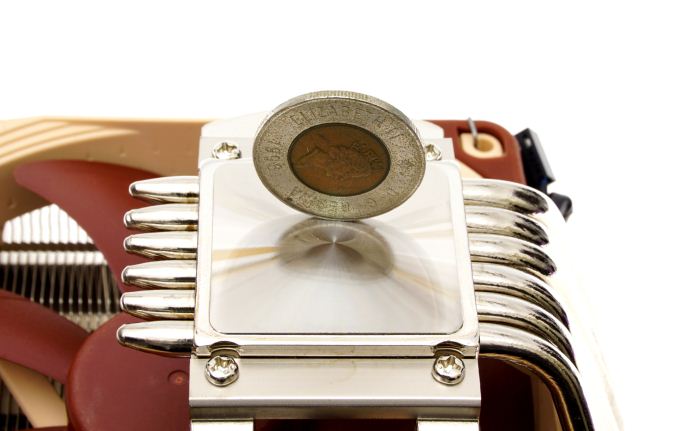








43 Comments
View All Comments
wolfemane - Wednesday, January 18, 2017 - link
This is from my personal experience only, but the L9i didnt cool much better than a stock Intel cooler. It just did it much quieter. I had one on an i3-6100 in a node 202 build and in a Bitspheonix prodogymitx case. I then swapped the 6100 for a 6600k and that was beyond the l9is capabilities in either case. But that was to be expected. Even noctua doesn't recommend the L9i for anything more than 65w unless in a very well ventilated case.
xenol - Wednesday, January 18, 2017 - link
I would've liked to see the heatsinks installed on a system in order to gauge how it might look on my own builds. Cooling performance is important, but I'm willing to sacrifice that if these coolers make it a pain to work on my computer.bigboxes - Wednesday, January 18, 2017 - link
I've got an AXP-200R in my HTPC. I didn't need to go that low of profile, but the huge fan is super quiet and perfect for my application. At 73mm of height clearance I'd think that the Thermalright model would have been in your review.AXP-200R website: http://thermalright.com/product/axp-200r/
AXP-200R in use: http://i256.photobucket.com/albums/hh175/bigboxes/...
stlouis1 - Thursday, January 19, 2017 - link
I've been using AXP-100's as my go to for small form factor builds. It would have actually been nice to see the AXP-100/200 in this review for comparison as the Thermalright options have become hard to acquire in Canada (not sure about elsewhere)genzai - Wednesday, January 18, 2017 - link
Can you add a bit more pertinent info? Like full socket compatibility. (2011.3?)Also can you talk about Rack U height as that is another place LP coolers are used. What is the minimum RU these coolers would fit?
Thanks
Ranger1065 - Thursday, January 19, 2017 - link
Good heavens Anandtech, a new article! Don't overdo it now. It seems to me more effort is expended on Tweets these days. Interesting read though.colonelclaw - Thursday, January 19, 2017 - link
A word of caution to those of you putting together a mini-ITX build - I had to return 3 coolers as they wouldn't fit on an Asus MAXIMUS VIII IMPACT. In all 3 cases, it wasn't because the cooler was too tall (I did measure the height available), but because the cooling pipes or whatnot would hit components on the motherboard.I can't speak for other motherboards, but the components on the Asus are so tightly packed in and all around the CPU socket, that available width is just as important.
zodiacfml - Thursday, January 19, 2017 - link
awesome performance but too big and pricey. the Reeven seems to be good value here as it is tiny compared to a Hyper 212 evo.Voldenuit - Thursday, January 19, 2017 - link
Any VRM temperature measurements? And comparison to tower coolers? One of the advantages of top down coolers compared to conventional towers is their cooling of motherboard components, so would be interested to see.losonn - Saturday, January 21, 2017 - link
Any chance of updating this roundup with results from the significantly more relevant Noctua NH-L9x65?The NH-L9x65 is a comparable size / weight / height / price to both the Reeven & Phanteks coolers featured here where the NH-C14S is *double* the height and price of the other coolers...